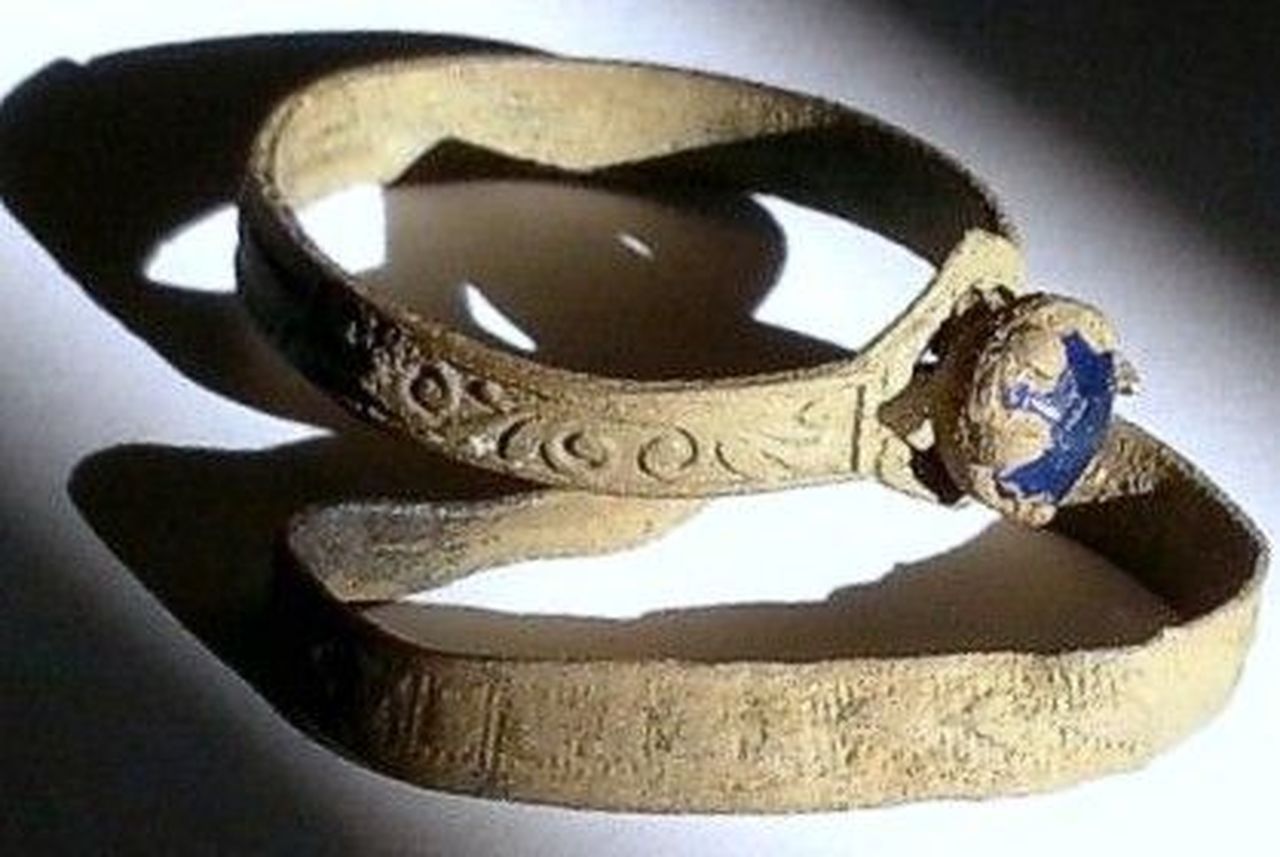Republic of Texas “Dragoon Button” Discovery
FRIDAY, MAY 2ND, 2014
A Republic of Texas “Dragoon” button and two “trade” rings were among artifacts recovered in 2013 from one of the Texan-Santa Fe Expedition’s 1841 camp sites located in Floyd County, Texas.

Republic of Texas “Dragoon” button, circa 1837, discovered in 2013 by Jerry Leatherman and Ronnie Carpenter at a site in Floyd County, Texas.

The button after cleaning. “Texas” is above the top of the star. The “D” stands for Dragoons, another name for cavalrymen. The back gives the maker as: “SCOVILL* WATERBURY”. This button is very rare.

Republic of Texas “Dragoon” button, circa 1837, discovered in 2013 by Jerry Leatherman and Ronnie Carpenter at a site in Floyd County, Texas.

The button after cleaning. “Texas” is above the top of the star. The “D” stands for Dragoons, another name for cavalrymen. The back gives the maker as: “SCOVILL* WATERBURY”. This button is very rare.
The Texan-Santa Fe Expedition of 1841
By 1841 the Republic of Texas had been an independent nation for five years following a successful revolt against Mexico. The President of Texas, Mirabeau B. Lamar, had decided to send an expedition to Santa Fe after receiving exaggerated reports that the majority of citizens of New Mexico desired to become part of Texas and break away from Mexico.
Santa Fe was the prize economic gem in New Mexico since it was the trade center of the United States. The famed Santa Fe Trail was an established trade route, originating in Saint Louis, Missouri. Texas was in desperate need of economic help and wanted to tap the huge flow of goods, gold, silver and furs funneling through Santa Fe.
President Lamar, ignoring the objections of other Texas politicians, pushed for an expedition to Santa Fe in an effort to fill the coffers of the struggling republic. A force of over 200 Republic of Texas soldiers, including one six-pounder cannon, and over 100 merchants and support personnel driving 22 heavily laden wagons filled with supplies and trade goods, made up the expedition dubbed the “Santa Fe Pioneers” by President Lamar. They left Brushy Creek near Austin on Sunday, June 20, 1841, full of expectations of riches and adventure. The adventure part they received in full measure along the way, severely testing their fortitude, supplies and well being, but the riches were a pipe dream.

The copper “trade” ring on the bottom, without the stone, has a Spanish inscription inside which, when translated, reads: “I will never forget you”.

Two rings discovered in 2013 at the camp site of the 1841 Texan-Santa Fe Expedition. These rings may be part of the “trade goods” carried in the wagons of the expedition.

Two rings discovered in 2013 at the camp site of the 1841 Texan-Santa Fe Expedition. These rings may be part of the “trade goods” carried in the wagons of the expedition.

The copper “trade” ring on the bottom, without the stone, has a Spanish inscription inside which, when translated, reads: “I will never forget you”.
Guided by a misleading guide, they struggled along on a march that wandered around some of the most difficult terrain to traverse in Texas. In the last part of August the now disgruntled Pioneers arrived in the southeastern part of Motley County, with less than half of their wagons surviving the rugged trip. The misadventures had scarcely begun. Travelling through Motley and sending a scout party into Hall County, they would ultimately wind up camping in Motley, Briscoe and Floyd counties at several different sites while they tried to find a way to get the remaining wagons up the steep caprock. They were constantly harassed by Indians, hunger, the weather and indecision. The last part of their force, with only three wagons left, was finally led up the caprock in Briscoe County in late September. They thought they were beginning the last leg of their journey. Instead they marched into New Mexico and were captured without a shot being fired by a Mexican Army. Ultimately the Santa Fe Pioneers were forced to walk as prisoners to a Mexico City prison. Click here to see a map of the expedition.
Cylinder Restoration
FRIDAY, MAY 2ND, 2014
This cylinder from an 1847 Colt Walker “Transition” cap and ball revolver was dug in Floyd County, Texas in 2012.
The serial number is 1024. The first 1000 of these revolvers were delivered to the U. S. Army. Serial numbers 1000 – 1020 were presentation models given to top U.S. officials. It is not yet known who received this cylinder or how it ended up in Floyd County. Frequently owners of cap and ball revolvers carried spare cylinders in the event they needed to reload quickly. No other part of this gun was found after a search of the area. The cylinder still has three balls loaded.

This scene (inscribed on the cylinder) was on those first 1000 plus pistols. It is intended to represent the Texas Rangers in a conflict with Indians, but the artist mistakenly dressed the Rangers in the uniform of the U.S. Dragoons.